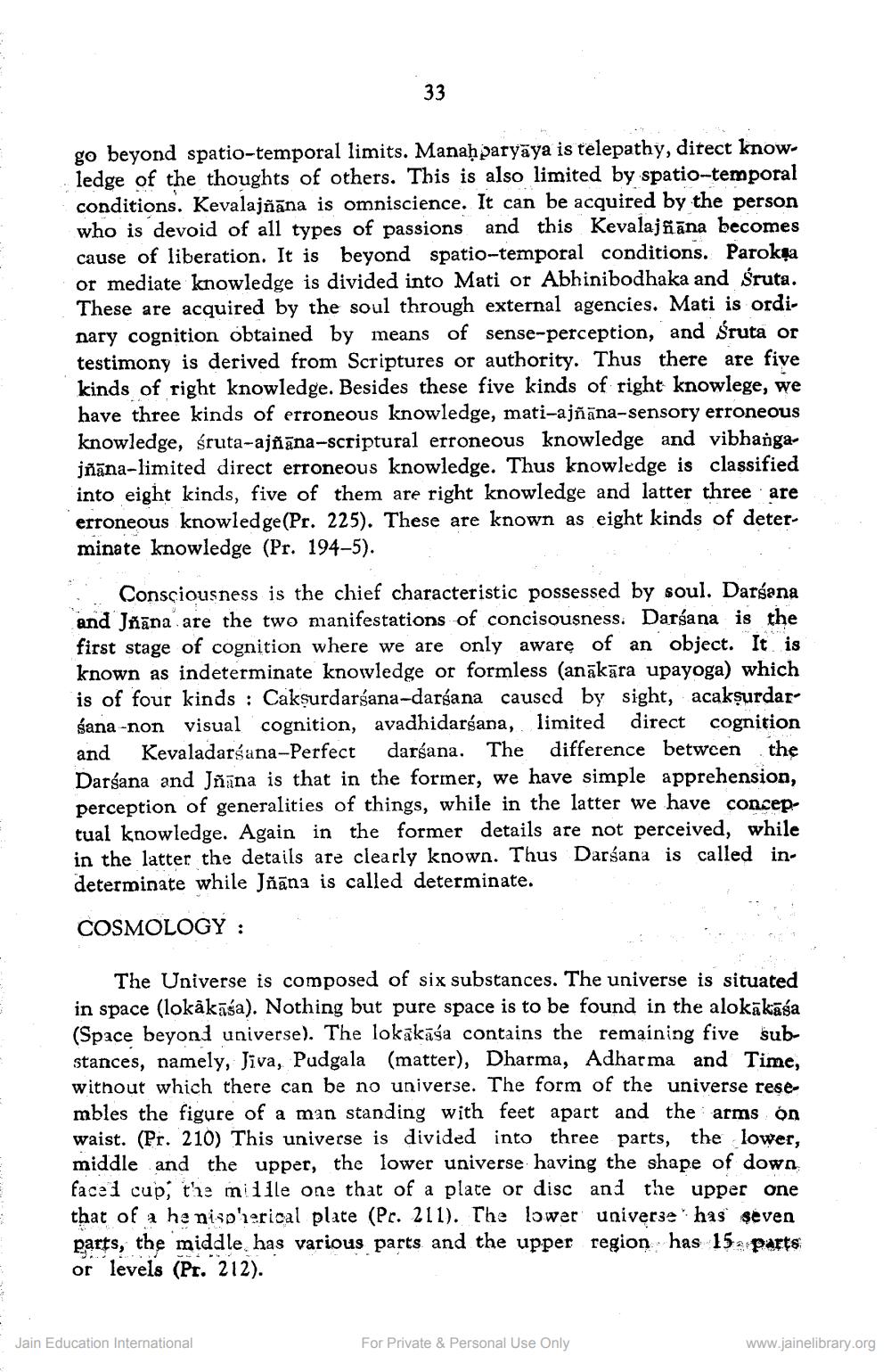________________
go beyond spatio-temporal limits. Manah paryaya is telepathy, direct knowledge of the thoughts of others. This is also limited by spatio-temporal conditions. Kevalajñāna is omniscience. It can be acquired by the person who is devoid of all types of passions and this Kevalajfiāna becomes cause of liberation. It is beyond spatio-temporal conditions. Parokya or mediate knowledge is divided into Mati or Abhinibodhaka and śruta. These are acquired by the soul through external agencies. Mati is ordinary cognition obtained by means of sense-perception, and Sruta or testimony is derived from Scriptures or authority. Thus there are five kinds of right knowledge. Besides these five kinds of right knowlege, we have three kinds of erroneous knowledge, mati-ajñāna-sensory erroneous knowledge, śruta-ajñāna-scriptural erroneous knowledge and vibhangajñāna-limited direct erroneous knowledge. Thus knowledge is classified into eight kinds, five of them are right knowledge and latter three are erroneous knowledge(Pr. 225). These are known as eight kinds of determinate knowledge (Pr. 194-5).
Consciousness is the chief characteristic possessed by soul. Darsana and Jñana are the two manifestations of concisousness. Darsana is the first stage of cognition where we are only aware of an object. It is known as indeterminate knowledge or formless (anākāra upayoga) which is of four kinds : Caksurdarśana-darśana caused by sight, acakşurdar. śana -non visual cognition, avadhidarśana, limited direct cognition and Kevaladarśana-Perfect darśana. The difference between the Darśana and Jñāna is that in the former, we have simple apprehension, perception of generalities of things, while in the latter we have conceptual knowledge. Again in the former details are not perceived, while in the latter the details are clearly known. Thus Darsana is called indeterminate while Jñāna is called determinate.
COSMOLOGY :
The Universe is composed of six substances. The universe is situated in space (lokākāśa). Nothing but pure space is to be found in the alokakasa (Space beyond universe). The lokākāsa contains the remaining five substances, namely, Jiva, Pudgala (matter), Dharma, Adharma and Time. without which there can be no universe. The form of the universe resembles the figure of a man standing with feet apart and the arms on waist. (Pr. 210) This universe is divided into three parts, the lower, middle and the upper, the lower universe having the shape of down facel cup, tre mille one that of a plate or disc and the upper one that of a he nispherical plate (Pc. 211). The lower universe has seven parts, the middle has various parts and the upper region has 15 parts or levels (Pr. 212).
Jain Education International
For Private & Personal Use Only
www.jainelibrary.org




